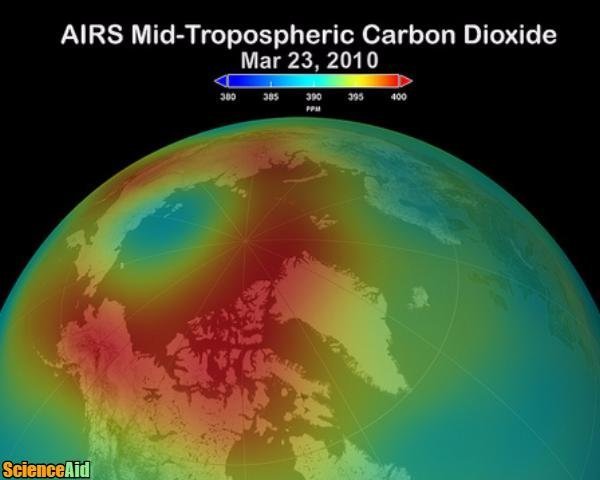Renewable Energy and Solar Cells Technology
Edited by Irfan Khan, Jen Moreau, Sharingknowledge, SarMal
Depletion of Conventional Energy Resources
The majority of electricity in the world is produced from formed fossil fuels such as coal, natural gas, and oil. Because of increased consumption, these natural resources are depleting at a higher rate than their production. Fossil fuels are obtained from biologically degraded materials such as plants and animals. These biological materials are degraded by heat, pressure and biological reaction. There are many challenges to the current global dependence on fossil fuels, including the effect of fossil fuels on the environment and energy security.
The combustion of coal, oil and other fuels generate carbon dioxide. This increased generation of carbon dioxide combines with nitrous oxide, CFC, and methane to capture outgoing infrared radiation preventing it from leaving the earth. This effect is known as the greenhouse effect. The pre-historic concentration of CO2 was about 280 ppm, but today the amount of carbon dioxide has reached 377 ppm. The greenhouse effect is responsible for erratic weather patterns, droughts, floods, and submerging of low-lying areas due to the melting of ice at poles.
Significance of Renewable Energy
Many developing countries are paying considerable attention to renewable energy resources to produce sustainable energy for domestic and industrial usage. Solar power and wind energy are major categories of renewable energy. Solar cell technology has enormous potential to overcome the problems of energy security and environmental safety by producing clean energy at cheaper rates. Solar cell technology deals with crystalline solar cells, thin films solar cells, and organic photovoltaic solar cells.
Photovoltaic Effect
The word "photovoltaic" is a combination of two words "photo" means light and "voltaic" means voltage. The conversion of light energy into electrical energy occurs in the photovoltaic or solar cells. The system which converts light energy into electric energy is known as a photovoltaic system. There are a number of materials which have been used for photovoltaic applications including silicon technology and thin film technology.
Photovoltaics converts light into electricity. This conversion occurs in light atoms. Solar cells include a thin piece of semi-conductive material that is fabricated to form an electrical field with one side positive and one side negative. When sunlight (light energy) hits the solar cell, the electrons are tapped from the atoms, termed a work function, in the semiconducting material. The ejection of the electrons makes them excited and moving them to higher energy states and free to flow in the external circuit. This extra energy caused by the ejected electrons creates a potential difference or electro-motive force (EMF). These floating electrons are termed photoelectrons and will begin to diffuse depending upon the galvanic potential of a different material or different phases. This built-in potential is also known as galvanic potential. The electrons are captured by an electric conductor creating an electrical current. The magnitude of the voltage produced depends upon the number of electron-hole pairs which are generated by sunlight. The Higher number of electron-hole pairs result in high galvanic potential.
A solar cell converts light energy into electric energy by using photovoltaic effect. Light is absorbed by the active material, and electron-hole pairs are generated at P-N junction formed between P-type and N-type semiconductor materials. By absorbing energy, excited electrons move to the conduction band where they are driven towards electrical contact. These separated electrons develop short circuit voltage and current and drive the load resistance in the external circuit.
Critical Parameters for Solar Cell Operation
- 1Band gap and light absorption.Advertisement
- 2Generation of electron-hole pair.
- 3Separation of charge carriers.
- 4
Solar Cells Generation
Solar cells are categorized into four generations based on their efficiency and fabrication route.
- 1Traditionally first generation solar cells are made of silicon technology. They possess high efficiency and stability, but their manufacturing route is complex and costly. The efficiency of such cell is reported up to 15% to 20%. This technology uses silicon in pure monocrystalline and polycrystalline form. Currently, most of the world's commercial solar cells belong to this generation.First generation solar cells.
- 2This generation of solar cells utilizes thin film technology in which cells are made of layers of semiconductor materials of few micrometer thicknesses. They utilize less manufacturing material, and their fabrication route is easy and comparatively cheaper. But the use of high temperature and vacuum processes are its main limitation which adds up to its cost. Such type of solar cells consists of amorphous silicon, cadmium tellurium (CdTe), and copper indium gallium diselenide (CIGS). Reported efficiency of second-generation solar cells is 10-15 %.Second generation solar cells.
- 3Third generation solar cells consist of organic materials such as small molecules or polymers. Polymer cells are a subcategory of organic solar cells. These solar cells are fabricated from different novel materials besides silicon, e.g. nanotubes, silicon wires, solar inks using traditional printing press technologies, organic dyes and conductive plastics. The third generation involves expensive high-performance experimental multi-junction solar cells which hold the world record in solar cell performance. A lot of research is being carried out in this field. Currently, they are manufactured at laboratory scale due to their high equipment cost.Third generation solar cells.
- 4Fourth generation solar cells are an advanced form of third generation nanotechnology-based solar cells. The efficiency of these cells has been increased significantly by maneuvering the nanostructure of the photovoltaic devices. Fourth generation dye-sensitized solar cells (DSSC) contain a colored dye as light absorbent P-type material and N-type nanowires. Nanowires have higher surface area than thin films which makes them an excellent candidate for solar cells with greater efficiencies.Fourth Generation Solar Cells.
Applications of Solar Cells
Solar energy is extensively used in following sectors of human activity:
- 1Solar panels of a satellite.
- 2Solar cars.
- 3Fan, cooler, mobile phone, TV, etc.Household appliances, e.g.
Referencing this Article
If you need to reference this article in your work, you can copy-paste the following depending on your required format:
APA (American Psychological Association)
Renewable Energy and Solar Cells Technology. (2017). In ScienceAid. Retrieved Apr 25, 2024, from https://scienceaid.net/Renewable_Energy_and_Solar_Cells_Technology
MLA (Modern Language Association) "Renewable Energy and Solar Cells Technology." ScienceAid, scienceaid.net/Renewable_Energy_and_Solar_Cells_Technology Accessed 25 Apr 2024.
Chicago / Turabian ScienceAid.net. "Renewable Energy and Solar Cells Technology." Accessed Apr 25, 2024. https://scienceaid.net/Renewable_Energy_and_Solar_Cells_Technology.
If you have problems with any of the steps in this article, please ask a question for more help, or post in the comments section below.
Comments
Article Info
Categories : Engineering Economics
Recent edits by: Sharingknowledge, Jen Moreau, Irfan Khan

















